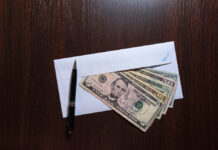A credit card is usually ripe with financial advantages, of which perhaps none are as prevalent and well known as cashback. It is the single most important incentive to most credit card users, especially when combined with various bonuses and “in house” purchases from the card provider.
Here we take a deeper look at how the rewards system works in practice, and which pitfalls you as a consumer must avoid at all costs.
Always pay down your balance on time
Credit cards differ from other forms of consumer credit in the way they charge interest. When you swipe a credit card, you’re normally granted an interest free extension, which in practice means that cards can be used without any additional cost. The caveat is that all funds must be repaid within the grace period.
Cashback may be an excellent form of financial incentive, but the advantage quickly vanishes if you fail to repay the entire balance within the due date. In turn, this is how banks make their money, by charging high interest rates on delinquent payments.
Be conscientious when using your card
It is common practice among banks to tie cashback bonuses to specific groups of products, such as food, airfares and restaurant visits. With these restrictions in place you will need to match your credit card spending to those products and services which maximize your financial profits.
Moreover, some credit cards offer universal bonuses, devoid of any purchase restrictions. Such cards typically offer a lower percentage of cashback, but in return you get rewarded for all expenditures, regardless of the vendor category.
How does it work?
As the word implies, cash is handed back to you after you swipe your card (both online and in the real world). At months end the bank will summarize all of your expenditures, and look at which purchases qualify for a refund. It is a means of incentivizing credit card use, and can be a helpful tool for a conscientious customer.
You will typically be given a percentage reward between 1-3%, although outliers exist. Your payment will be refunded to your card at months end, either as a credit, or money you can withdraw for other use. However, there is an important distinction that you need to be aware of.
In order to qualify as real “cashback” you must be given the option of withdrawing the money as cash from your credit card account. Some card companies simply give you the option of trading in your bonus(es) by crediting previous purchases. The effect is that your credit card bill shrinks, but you won’t have any money on hand.
How some people “save” money year around
Several news articles have been written about the cashback system, and how consumers use it to save money. A classic example involves airfares, in which consumers redeem their rewards in exchange for airline tickets.
Imagine the following scenario: Your card rewards you with 1.5% of all purchases, which you can withdraw as cash. Throughout the year you spend roughly $50,000 on your card, using it to pay for food, clothes and other necessities. In this case, you’ll be rewarded with 1.5% of your total expenditure, which equals $750. That will often be enough money to buy an international airline ticket!
However, as we previously noted: In order to “save” the $750, you must ensure that all balances are repaid in full before the APR cut-off date.
In some European companies, rewards have also been restricted on a monthwise basis. According to Norwegian credit card comparison site https://www.kredittkortinfo.no/cashback, cashback on gasoline purchases and similar products often have a max limit per month. In effect this means that consumers can only utilize 1/12 of their total bonus per month.
How banks make their money
You may wonder why banks offer cashback in the first place, and who “really” pays for it? An answer can be found in the financial agreement between vendors and credit card companies. Simply put, vendors will pay transaction fees of anything between 1.5 and 5% of the total sales amount to the credit card companies. In turn, it allows card companies to reward their customers with generous bonuses.
In other words, the vendor will indirectly pay your bonus, as the card company refunds a part of their payment to your account. From the bank’s perspective, it also serves as a powerful incentive to attract new customers.
Important caveats
As with other bonus offers, banks have imposed caveats on cashback rewards. The most important exemption applies to cash withdrawals at ATMs. In this case you won’t receive any bonus payments on the withdrawal. Moreover, banks will usually impose a 5% withdrawal fee, combined with immediate interest charges.
Where store purchases grant you interest extensions upwards of 30 days, this doesn’t apply to ATM withdrawals.
Sources:
1. Kredittkortinfo.no
2. Finance.yahoo.com
Find a Home-Based Business to Start-Up >>> Hundreds of Business Listings.

















































